
Leucozona laternaria is a European species of hoverfly.
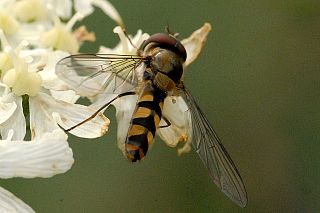
Meliscaeva auricollis is a West Palearctic species of hoverfly.

Meliscaeva cinctella is a Holarctic species of hoverfly.

Parasyrphus punctulatus is a Palearctic species of hoverfly.
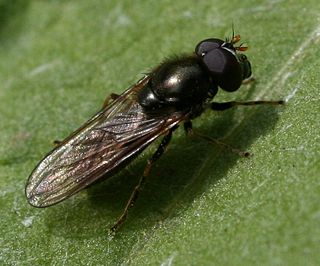
Cheilosia pagana is a Holarctic species of hoverfly. Like most Cheilosia it is black, and because of this may often be overlooked as a hoverfly. One identifying feature is a large red to orange 3rd antennal segment.
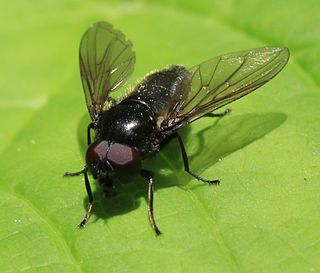
Cheilosia vicina is a hoverfly species found in the Palearctic.
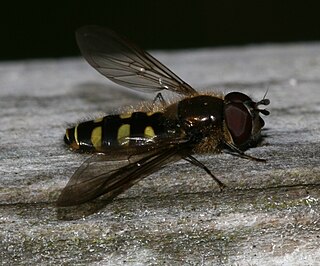
Melangyna lasiophthalma is a Holarctic species of hoverfly.

Fagisyrphus cinctus is a European species of hoverfly. This species has a muddled taxonomic history. Older authors treated it as a member of the genus Melangyna, and later sources in Meligramma, but the most recent sources recognize it as the sole species in its own monotypic genus, Fagisyrphus.

Cheilosia grossa is a widespread European species of hoverfly. Adults can be found in spring on sallow catkins and the larvae tunnel in the stems of various thistle species.

Pipiza noctiluca is a species of Hoverfly, from the family Syrphidae, in the order Diptera.

Parasyrphus lineolus is a Holarctic species of hoverfly.

Parasyrphus vittiger is a species of hoverfly, from the family Syrphidae, in the order Diptera.
Parasyrphus malinellus is a species of hoverfly, from the family Syrphidae, in the order Diptera.
Heringia heringi is a European species of hoverfly.
Melangyna arctica is a Holarctic species of hoverfly.

Didea alneti is a Holarctic species of hoverfly.

Orthonevra geniculata is a species of hoverfly found in the Palearctic.

Cheilosia impressa is a Palearctic species of hoverfly. Like most members of its genus C. impressa is a rather small, dark insect and identification can be problematic.
Chrysotoxum fasciatum is a species of Holarctic hoverfly.
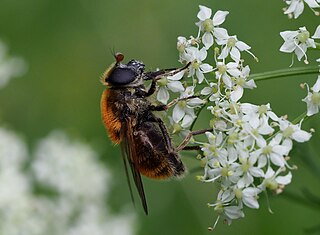
Cheilosia chrysocoma is a European species of hoverfly.

















